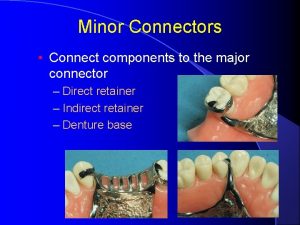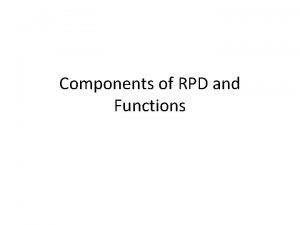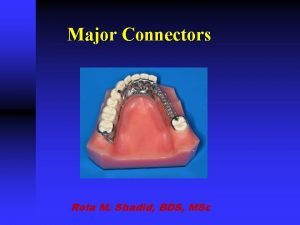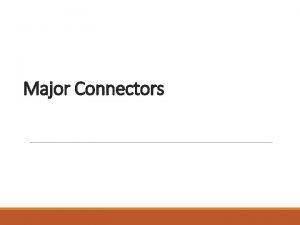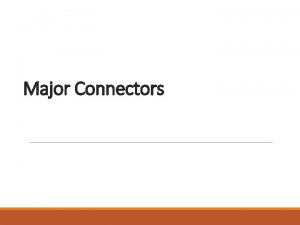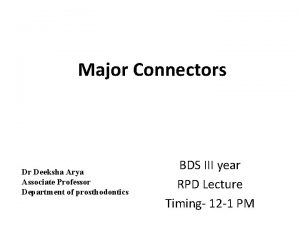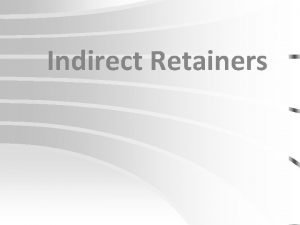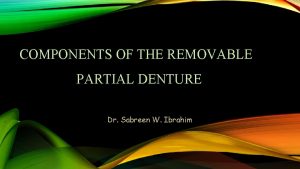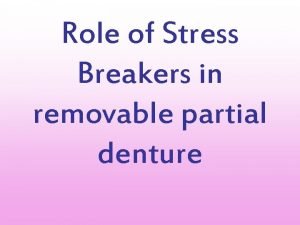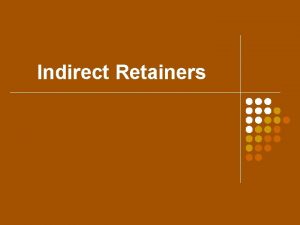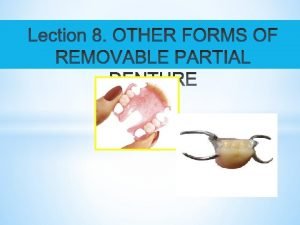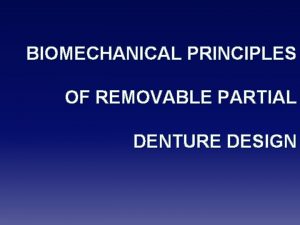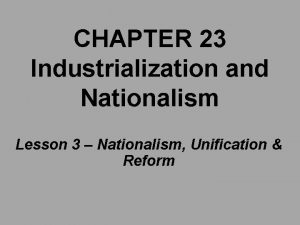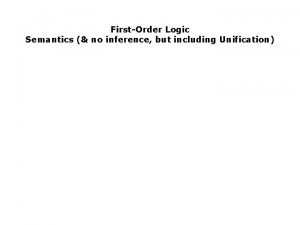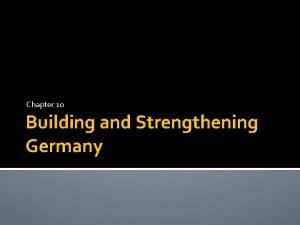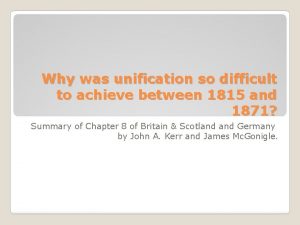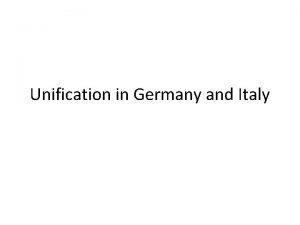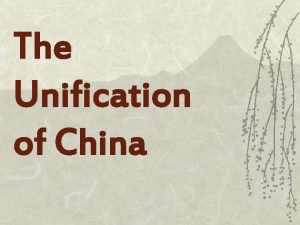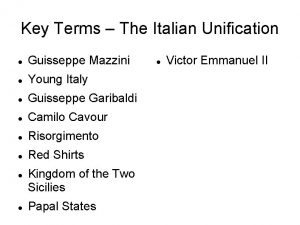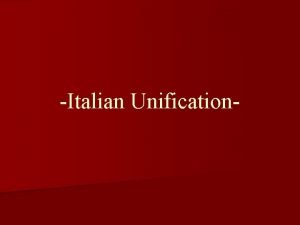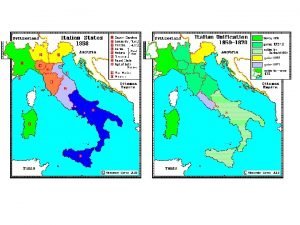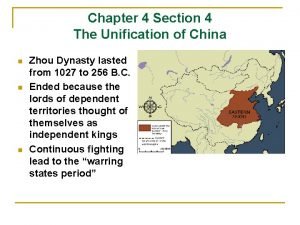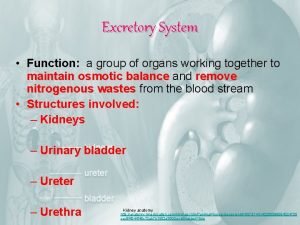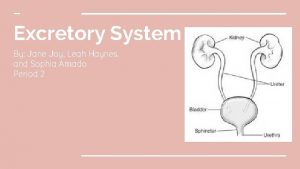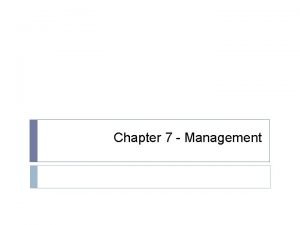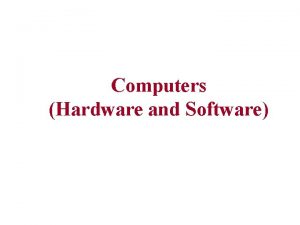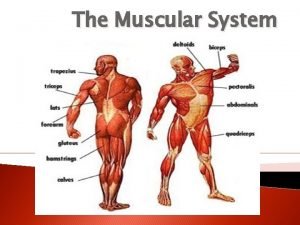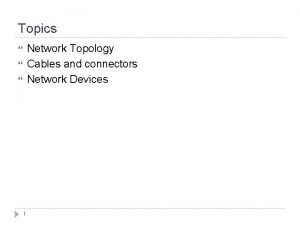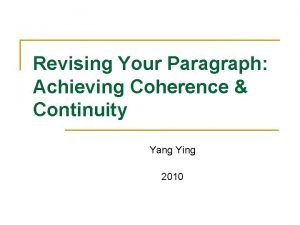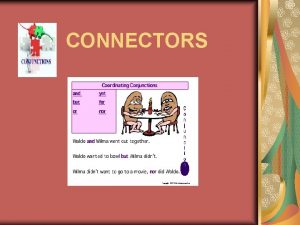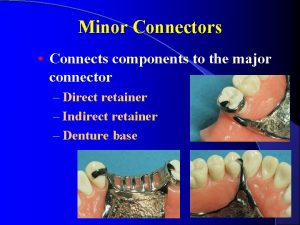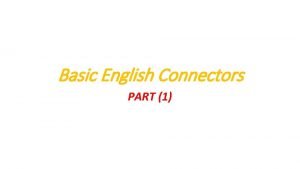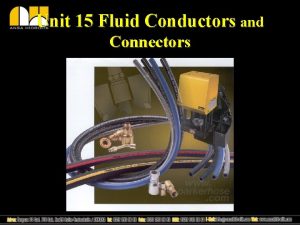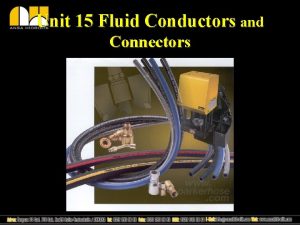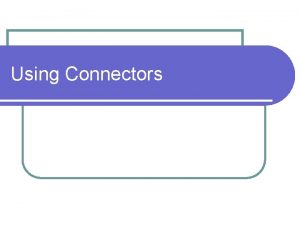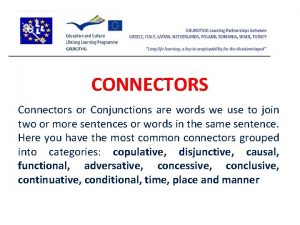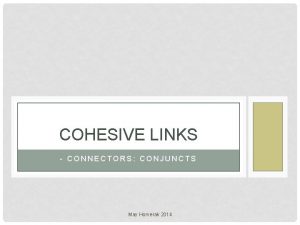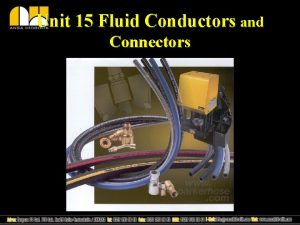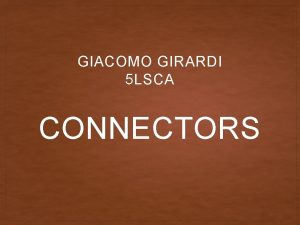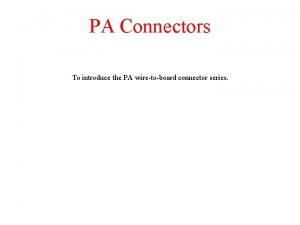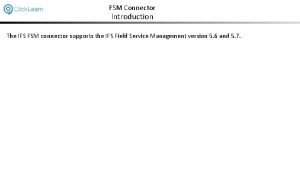Major Connectors Functions of a Major Connector Unification




















































- Slides: 52

Major Connectors

Functions of a Major Connector · Unification - Partial denture acts as one unit - Connects various parts

Functions of a Major Connector · Stress Distribution - Distributes functional loads to both teeth & mucosa

Functions of a Major Connector · Cross-Arch Stabilization (Counterleverage) - Bracing elements on one side of the arch providing stability to the other

Requirements of a Major Connector · Rigidity - Functions as one unit

To Increase Rigidity · Use a more rigid alloy - Chrome-cobalt > gold alloys; cast > wrought · Shape - 1/2 round > 1/2 pear shaped > flat bars

To Increase Rigidity · Increase the bulk as the length increases · Corrugate linguo-plate or rugae areas

Requirements · Non-Interference with Tissues - Should not enter undercut areas · avoid by changing path of insertion · or by using blockout

Non-Interference With Tissues · Avoid terminating on: - Free gingival margin · Cross abruptly at 90 o · Relief is used to minimize impingement (Fig 2 -17, Stewart's)

Non-Interference With Tissues · Avoid terminating on: - Hard structures such as the midpalatal suture or mandibular tori · Place relief

Non-Interference With Tissues · Avoid terminating on: - Lingual frenum & the movable soft palate - Soft tissue movements must also be allowed - Careful intraoral exam

Minimize Food Impaction · Locate margins away from the FGM · Eliminate "traps" or large concavities where food can collect

Unobtrusive · Smooth transition from connector to denture base - butt joint

Unobtrusive · Line angles and edges should be smooth and rounded · Borders should not interfere with speech (Fig 2 -21, Stewart's)

Mandibular Major Connectors · · Lingual Bar Lingual Plate Continuous Bar labial bar

Mandibular Major Connectors · Lingual Bar - Most common in mandibe - Use whenever possible

Mandibular Major Connectors · Lingual Bar - Shape · Flat on tissue side · Convex or tear-drop on tongue side · (1/2 pear shape, with thin edge toward teeth) (Fig 2 -35, Stewart's)

Mandibular Major Connectors · Lingual Bar - Size · Occluso-gingival width = 6 to 8 mm · Thickness = l. 5 to 2 mm

Inferior Border Mandible · Patient lifts tongue - Activates floor of mouth · Measure from tip of probe to free gingival margin

Inferior Border Mandible · Record values in chart, transfer to cast

Lingual Bar · Position · Superior border · l. 5 -2. 0 mm or more below FGM · As far from gingival margin as possible (Fig 2 -15, Stewart's)

Potential Impingement · Anterior major connector moves toward tissue as the posterior portion is loaded · Space needed more when ridge is less vertical (Fig 2 -33, Stewart's)

Mandibular Major Connector Relief · Eliminates impingement - Wax spacer (relief) placed under major connector - one thickness of 30 gauge wax

Indications: · 1. The lingual bar is the mandibular major connector of choice if sufficient bracing and indirect retention can be provided by clasps and indirect retainers; and if future additions of prosthetic teeth to the framework to replace extracted natural teeth are not anticipated. · 2. Diastemas or open cervical embrasures of anterior teeth. · 3. Overlapped anterior teeth.

Contraindications: · 1. Less than 8 mm between the marginal gingiva and the activated lingual frenum and floor of the mouth. · 2. Only a few remaining anterior teeth which must be contacted to provide a reference for fitting the framework and indirect retention. · 3. Lingually inclined teeth. · 4. An undercut lingual alveolar ridge which would result in an excessive space between the bar and the mucosa.

· Advantages: · 1. Covers a minimum of surface area of teeth and tissues therefore the potential for caries, periodontal problems and microsites caused by plaque being held in contact with teeth and tissues is minimal. · 2. Patients prefer lingual bar to lingual plate, probably because it is relatively small, inconspicuously located and minimally interferes with function. · 3. Esthetic. · Disadvantages: · 1. Not as rigid as the lingual plate, sublingual bar or lingual bar with continuous bar indirect retainer. · 2. Difficult to additional prosthetic teeth to framework.

Lingual Plate (Linguoplate) · Lingual bar with extension over cingula of anterior teeth · Use where a lingual bar cannot be used

Lingual Plate Indications 1. Less than 8 mm between the marginal gingiva and the activated lingual frenum and of the mouth. · 2. Only a few remaining anterior teeth which must be contacted to provide a reference for fitting the framework and indirect retention. · 3. Undercut or parallel lingual alveolar ridge when the superior edge of a lingual bar cannot be located in close contact with the mucosa and still be at least 3 mm inferior to the marginal gingiva. · 4. Mandibular tori or exostosis which must be covered by the RPD because they cannot be surgically removed or avoided in the RPD design. Relief is provided between the torus or exostosis and the framework.

Lingual Plate advantages · Rest at each end of lingual plate · Prevents forces being directed facially · Easier denture tooth addition than bar

Contraindications: · 1. A lingual bar may be used. · 2. Overlapped anterior teeth where the undercuts in the area of the superior edge of the plate cannot be removed. Frequently this criteria cannot be met and a lingual plate which will have small gaps between the superior edge of the plate and the teeth must be used. · 3. Lingually inclined teeth. · 4. Diastemas, unless the lingual plate can have slots in it to avoid the display of metal. . Open cervical embrasures where the plate would be visible. A lingual bar with continuous bar indirect retainer or a labial bar should be considered.

· Advantages: · 1. More rigid than a lingual bar. · 2. Metallurgically and structurally simple. · 3. Easy to additional prosthetic teeth to framework. · 4. May prevent supraerruption of the teeth it contacts. · Disadvantages: · 1. Covers more tooth and tissue surface than lingual bar. · 2. May be more noticeable to patient than lingual bar. · 3. May cause flaring of incisors if it contacts their cingula as the base area rotates tissue ward.

Lingual Plate Variations · May show through embrasures (Fig 2 -41 & 43, Stewart's)

Continuous Bar Retainer (Kennedy Bar, Double Lingual Bar) · Lingual bar with secondary bar above cingula · Secondary bar acts as indirect retainer

Continuous Bar Retainer · Potential food trap between two bars · Normally avoid

Labial Bar · Extreme lingual inclination of the remaining teeth · Indications are rare · Swing-lock design is a variation

Maxillary Major Connectors · · Anterior-Posterior Palatal Strap Full Palatal Strap Anterior Palatal Strap

Maxillary Major Connectors · Terminate 4. 0 mm or more from free gingival margin when possible

Anterior-Posterior Palatal Strap · · Maximum rigidity Minimum bulk Use in most cases Especially torus palatinus

Anterior-Posterior Palatal Bar · A narrow (A-P) variation of anteriorposterior palatal strap - Double palatal bar connector - Requires greater bulk for rigidity

Anterior-Posterior Palatal Bar · More objectionable to the patient · Strap connectors provide greater distribution of stresses

Full Palatal Plate · Maximum tissue support · Connector of choice in long distal extension cases · Six or less anterior teeth remain

Full Palatal Plate · · Abutments are periodontally involved Maximum stress distribution Flabby tissue Shallow palatal vault

Full Palatal Plate · Greater stability and stress distribution · Not used with torus · Increases retention

Full Palatal Plate · Connector should: - Cover same area as complete denture posteriorly - Have large surface area of mucosal contact · improves potential for retention

Full Palatal Plate · Generally of cast metal · Acrylic resin used in interim prostheses

Palatal Strap · Usually use for Class III & IV cases · Wide anterio-posteriorly

Palatal Bar · · Don’t use Narrow anterio-posteriorly Thick occluso-gingivally Palatal bar objectionable due to bulk (Fig 2 -24, Stewart's)

Palatal Strap (or Bar) · Never use in cases involving distal extensions or replacement of anterior teeth since it must be made bulky for rigidity · Relief may be required over bony midline · Not used with torus

Anterior Palatal Plate (U-Shaped or "Horse-Shoe" Palatal Connector) · Poor connector · Never use unless absolutely necessary · Requires bulk in the rugae area (where the tongue requires freedom) for rigidity

Anterior Palatal Plate · · Too flexible Allows movement at the posterior Traumatic to the residual ridge Use only where torus prohibits other connectors

Flexes, impinging on soft tissue

Unilateral RPD · Dangerous - Avoid · aspiration
 Latticework minor connector
Latticework minor connector Labial bar major connector
Labial bar major connector Palatal strap vs palatal bar
Palatal strap vs palatal bar Maxillary major connectors
Maxillary major connectors Cingulum bar major connector
Cingulum bar major connector Sublingual bar major connector
Sublingual bar major connector Rpd indirect retainer
Rpd indirect retainer Apron complete denture
Apron complete denture Crismani attachment
Crismani attachment Stress breaker in rpd slideshare
Stress breaker in rpd slideshare L beam principle in rpd
L beam principle in rpd Removable partial overdenture
Removable partial overdenture Principles of rpd design
Principles of rpd design Lingual bar drawing
Lingual bar drawing Unification prolog
Unification prolog Summary of the italian unification
Summary of the italian unification Chapter 23 lesson 3 nationalism unification and reform
Chapter 23 lesson 3 nationalism unification and reform Sardina
Sardina Zollverein germany map
Zollverein germany map Strong devotion
Strong devotion Germany before unification
Germany before unification Unification operating model
Unification operating model Unification in first order logic
Unification in first order logic Germany before unification
Germany before unification Why was italian unification difficult to achieve
Why was italian unification difficult to achieve German and italian unification compare and contrast
German and italian unification compare and contrast Unification of china
Unification of china Prolog unification
Prolog unification Obstacles to german unification
Obstacles to german unification Unification algorithm example
Unification algorithm example Germany before 1871
Germany before 1871 Gauge coupling unification
Gauge coupling unification Obstacles to italian unification
Obstacles to italian unification Unification of italy class 10
Unification of italy class 10 Italian risorgimento timeline
Italian risorgimento timeline National unification and the national state
National unification and the national state Stages of german unification
Stages of german unification The unification of china
The unification of china Describe the human excretory system
Describe the human excretory system 5 facts about the excretory system
5 facts about the excretory system Four major functions of management
Four major functions of management A computer system consists of both hardware and software.
A computer system consists of both hardware and software. What are the major functions of the muscular system
What are the major functions of the muscular system Function of commercial bank
Function of commercial bank Logical connectors examples
Logical connectors examples Bus topology connectors
Bus topology connectors Fanboys connectors
Fanboys connectors Muscle connectors
Muscle connectors Font search by image
Font search by image Example of coherence and cohesion
Example of coherence and cohesion Protectron electromech pvt ltd
Protectron electromech pvt ltd Compound preposition
Compound preposition Narrative connector
Narrative connector
